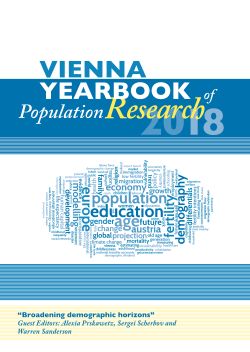
Vienna Yearbook of Population Research 2018, pp. 235-257, 2018/12/20
Broadening demographic horizons

The theory of the “(first) demographic transition” (DT) still has considerable practical relevance in the field of population research. For instance, the DT serves as a conceptual model that underlies the UN’s population projections, and is central to the discussion around the so-called “demographic dividend”. Although it was first described 90 years ago, several questions related to the DT remain open or need verification. In particular, there is debate about the question of what the indispensable triggers of the DT are. Assumptions regarding the primary causes include increased education for women and related changes in values, as well as economic development, urbanisation, migration, and the democratisation process. This paper aims to contribute to DT-related research using an innovative research approach. Our study covers all 102 countries with populations that have undergone the DT between 1950 and 2010. Among these countries, we identified 25 populations that passed through this process at an exceptionally high tempo. We refer to this process as “express transitioning” (ET), and seek to identify its main determinants by comparing the ET populations with the populations of the other DT countries. The data we use are taken from theWittgenstein Centre Data Explorer, the UN World Population Prospects, the UN World Urbanization Prospects, the World Bank Group, and the Center for Systematic Peace. Our analysis is based on rather descriptive methods, including ANOVA tests and bivariate correlations.We find that the urbanisation level and the education dynamics are most closely associated with ET, whereas other variables show no significant association with the ET process.